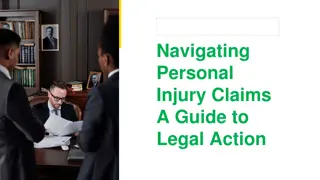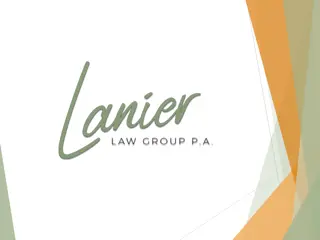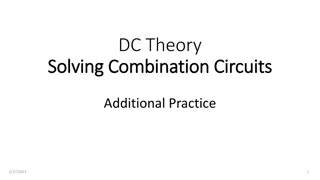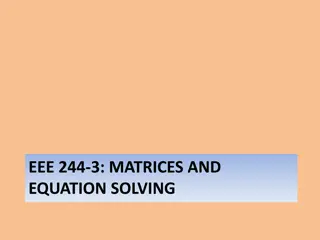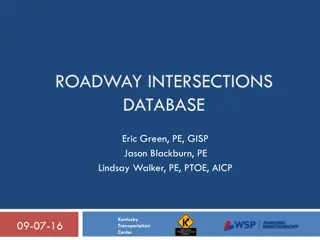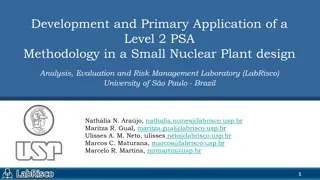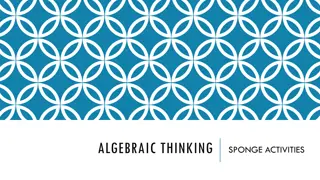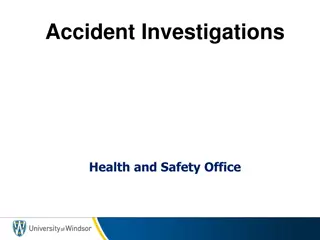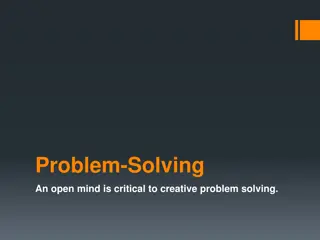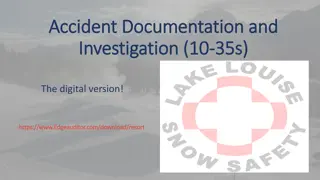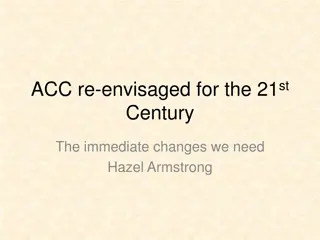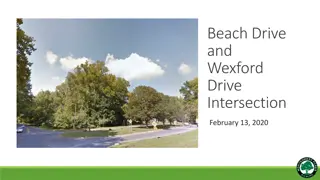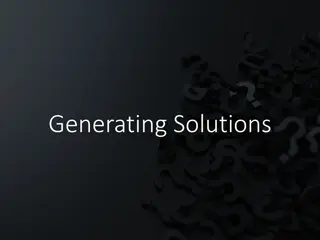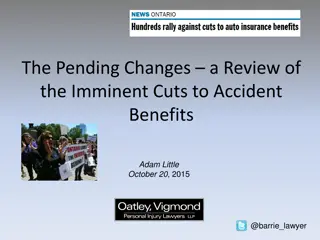Solving the McFarland Intersection Accident Challenge
Explore the dangerous accident problem at the Main Street and Park Street intersection in the town of McFarland involving large trucks and smaller cars. Your task is to analyze the causes of these accidents, assess the extent of damage and injuries, and propose effective solutions to enhance safety at this critical junction.
Download Presentation

Please find below an Image/Link to download the presentation.
The content on the website is provided AS IS for your information and personal use only. It may not be sold, licensed, or shared on other websites without obtaining consent from the author.If you encounter any issues during the download, it is possible that the publisher has removed the file from their server.
You are allowed to download the files provided on this website for personal or commercial use, subject to the condition that they are used lawfully. All files are the property of their respective owners.
The content on the website is provided AS IS for your information and personal use only. It may not be sold, licensed, or shared on other websites without obtaining consent from the author.
E N D
Presentation Transcript
Robo-Science: Accident Challenge Inspiration and some materials from: slider.gatech.edu
Introductory Videos Introduction to Challenge Actual Collisions #1-3 Impact Info Optional Additional Videos Crash A Crash B Crash C
Traffic Engineering YOU are assuming the role of a TRAFFIC ENGINEER Image source: http://www.gate wayengineers.co m/services/traffic -engineering/ Video: Role of a Traffic Engineer
The Challenge: Why? The people of the town of McFarland have an accident problem at the corner of Main Street and Park Street. During the past year, this heavily used intersection near downtown has been the site of several dangerous accidents involving large tractor-trailer trucks hitting smaller cars. Many of the accidents resulted in severe injuries and cars that had to be scrapped and totaled. That is, the cars could not be fixed and used again. There have even been some fatalities as a result of these car accidents.
The Challenge: What? Your challenge is to assist the town of McFarland to understand why the accidents are causing more damage and injury. You will determine the factors that lead to such accidents and explore possible solutions to the challenge.
Create a Model Use LEGO Digital Designer to build two models: Truck Car Use a bag of bb s to weigh down the car: Add bb s until total mass = 250 g.
Background Information: Maps Map 1: Town of McFarland Map 2: Intersection Close-Up
Background Information: Maps Map 3: Previous Year s Accident Data Map 4: This Year s Accident Data
Background Information: Videos Information from Mayor Information from Police Chief
Group Discussion What are some things you know from prior experience? What important facts and observations have you gathered from the challenge information and videos? What are the constraints/limitations?
Brainstorm What existing scientific knowledge will you need to use during this challenge? Working within the constraints of budget and time, what are some possible solutions to McFarland s problem?
Simulating McFarland Now, as traffic engineers, you must create a model to study the collisions under different conditions. You will propose a solution based on your data and observations.
Build Model Intersection Set up a model on-ramp as follows: Use 8x4 whiteboards Place 4 kits behind the board - 2 stacks of 2* Place a thick line of tape to mark where the incline ends ( ramp ) and the board becomes flat ( road ) Moving away from ramp , measure 45 cm from taped line and place another parallel line of tape *Get highest angle so that front truck bumper or light sensor does not touch board when transitioning from ramp to road
Preliminary Questions You have determined that the city should regulate truck speed and/or truck mass. How can we model different truck speeds? How can we model different truck masses? How can we test both variables (speed and mass) and still have a valid experiment? What is the dependent/responding variable? What variables should be controlled?
Procedure Questions You now need to collect information so that you can propose HOW the city should regulate truck speed and/or truck mass. You will need to test collisions that occur at low, mid, and high speed, and with truck mass of 500g, 750g, and 1000g. How many combinations will you need to test? What will happen to the truck's momentum as mass is increased? As speed is increased?
Variables: Speed and Mass Speed Measure 3 truck lengths from top of ramp and mark each length with dry erase marker. Each length represents a starting position: high, mid, or low, which correlates to a speed. Mass 500 g: Empty truck mass 750 g: Place one 200g and one 50g weight in truck bed 1000 g: Place two 200g weights in truck bed. Hang two 50g weights on the back of the truck bed.
Data and Observations For each trial, you will record the speed* of the truck and distance the car travels under different conditions of truck mass and truck speed. *Speed should correlate with ramp height, so there should be very little variation for speeds at the same height. You and your partner will be given a data table. If space in room is an issue: Partner up with another pair to collect data - you will use ONE truck and ONE car, but you will each record the data separately. Once you have your data table, you can begin collecting data.
Data Analysis: Scale Factor The high speed you tested represented 40 mph (the speed limit). However, this was not the actual high speed in the simulation. What scale factor is needed to scale up your fastest simulation speed to 40 mph? Scale factor is the number you will multiply your simulation speed by to convert it to 40mph. Use this scale factor to convert all of your average speeds from the simulation into mph.
Data Analysis: Graphs Using your collected data, make the following graphs (3 graphs total): 1. Make a bar graph to compare distance the car traveled for each combination of truck speed and mass. You will have 9 bars total. Locate your tallest bar. Find the ramp height (speed) and mass combination that led to that tallest bar. These will be your target speed and target mass. You will use these to determine which has a greater effect on the distance the car is pushed - speed or mass. 2. For target speed, make a scatterplot of mass vs. distance. You will have 3 points in your scatterplot (target ramp height with 500, 750, 1000 g). 3. For target mass, make a scatterplot of speed vs. distance. You will have 3 points in your scatterplot (target mass at low, mid, high height - use speed)
Further Analysis Label each bar on your bar graph as "minor damage", "major damage", or "fatal damage". Explain how you distinguished between the level of damage. Which bar represents the conditions that will most likely lead to fatal accidents? Why? Which has the greater impact on distance - truck speed or truck mass?
Conclusion Propose a speed limit and/or weight limit to the mayor of McFarland. You must support your proposal with data collected during the experiment.
Build Model Intersection Set up a model on-ramp as follows: Use 8x4 whiteboards Two ramp setups: Low: Place 2 kits behind the board 2 stacks of 1* High: Place 4 kits behind the board - 2 stacks of 2* Place a thick line of tape to mark where the incline ends ( ramp ) and the board becomes flat ( road ) Moving away from ramp , measure 45 cm from taped line and place another parallel line of tape *Get highest angle so that front truck bumper or light sensor does not touch board when transitioning from ramp to road
Preliminary Questions You have determined that the city should regulate truck speed and/or truck mass. How can we model different truck speeds? How can we model different truck masses? How can we test both variables (speed and mass) and still have a valid experiment? What is the dependent/responding variable? What variables should be controlled?
Procedure Questions You now need to collect information so that you can propose HOW the city should regulate truck speed and/or truck mass. You will need to test collisions that occur at low and high speed, and with an empty and full truck. How many combinations will you need to test? What will happen to the truck's momentum as mass is increased? As speed is increased?
Variables: Speed and Mass Speed Measure one truck length from top of each ramp and mark the length with dry erase marker. The high ramp represents high speed, and the low ramp represents low speed Mass Empty truck mass: 500g Full truck mass: Add mass to bed of truck to increase truck mass to 1000g
Data and Observations For each trial, you will record the speed* of the truck and distance the car travels under different conditions of truck mass and truck speed. *Speed should correlate with ramp height, so there should be very little variation for speeds on the same ramp. You and your partner will be given a data table. If space in room is an issue: Partner up with another pair to collect data - you will use ONE truck and ONE car, but you will each record the data separately. Once you have your data table, you can begin collecting data.
Data Analysis: Scale Factor The high speed you tested represented 40 mph (the speed limit). However, this was not the actual high speed in the simulation. What scale factor is needed to scale up your fastest simulation speed to 40 mph? Scale factor is the number you will multiply your simulation speed by to convert it to 40mph. Use this same scale factor to convert your average low speed from the simulation into mph.
Data Analysis: Graphing Using your collected data, make a bar graph to compare distance the car traveled for each combination of truck speed and mass. You will have 4 bars total. Locate your tallest bar. Find the ramp height (speed) and mass combination that led to that tallest bar. These will be your target speed and target mass. You will use these to determine which has a greater effect on the distance the car is pushed - speed or mass. 1. For target speed, compare how increasing the mass affected the distance the car traveled. 2. For target mass, compare how increasing the speed affected the distance the car traveled.
Further Analysis Label each bar on your bar graph as "minor damage", "major damage", or "fatal damage". Explain how you distinguished between the level of damage. Which bar represents the conditions that will most likely lead to fatal accidents? Why? Which has the greater impact on distance - truck speed or truck mass?
Conclusion Propose a speed limit and/or weight limit to the mayor of McFarland. You must support your proposal with data collected during the experiment.
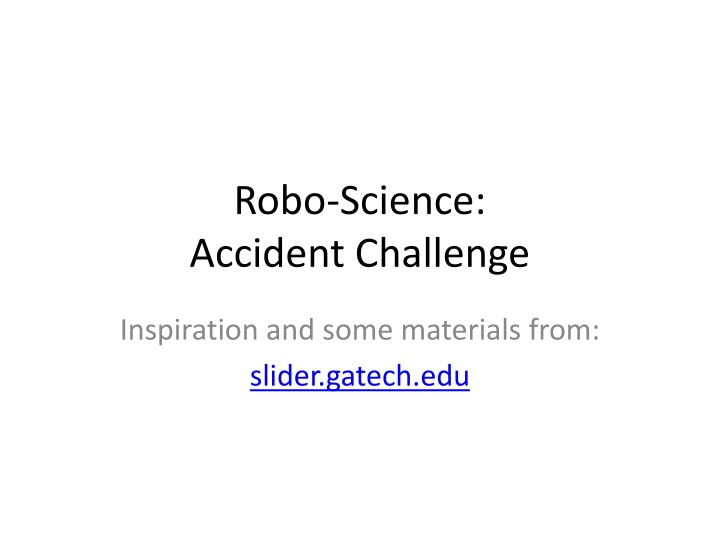

![[PDF] DOWNLOAD READ Diagnosis Solving the Most Baffling Medical Mysterie](/thumb/9855/pdf-download-read-diagnosis-solving-the-most-baffling-medical-mysterie.jpg)


